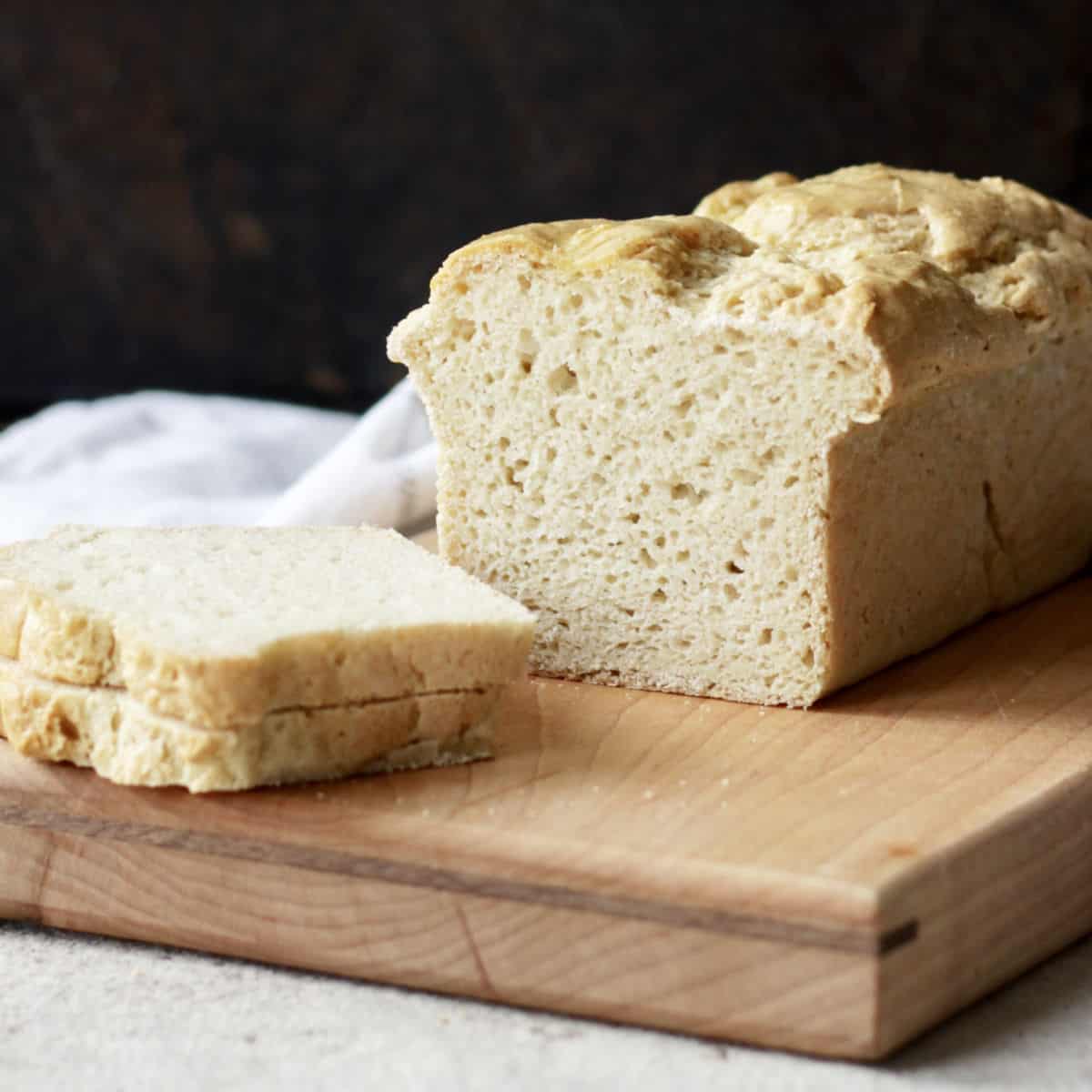Sorghum flour, a popular ingredient in gluten free mixes, is ground from the seed of the sorghum plant. Due to its mild, neutral, taste and soft, smooth texture, it works well for baking, thickening, and breading.
Sorghum tends to take on the flavor of other components in either sweet or savory recipes without being too bossy. When it's combined with a couple of other flours and a binder to replace the gluten (more on that below), it makes a pretty good replacement for wheat.

Jump to:
I like to bake with sorghum flour. The bread, muffins, pancakes, and cookies I make with it are nice and soft, as one would expect with wheat flour.
Like millet, wheat, maize (corn), rice, barley, oats, and rye, sorghum grows as a cereal crop, part of the grass family. Sorghum originated in Africa but is now grown throughout Asia, Central and North America, and Australia. The plant is durable in high heat and does well in drought conditions. So, it’s no surprise then that it’s a significant cereal crop worldwide.
Sweet sorghum, a related but different variety, grows in the American South for sorghum syrup production.
Is there gluten in sorghum?
Sorghum is a gluten free grain and is therefore a versatile, nutritious option for people with celiac disease or gluten sensitivity. A gluten free label ensures that care has been taken to keep the product free from cross-contamination.
Sorghum Flour Benefits
Sorghum flour is rich in fiber, protein, and antioxidants, polyphenols, phosphorus, iron, magnesium, copper, zinc, and potassium.
Fiber aids in keeping our digestive systems working and helps us to feel full longer.
Protein helps us to maintain muscle. Sorghum provides as much plant-based protein as quinoa does.
Antioxidants fight inflammation and heart disease.
Polyphenols act as important prebiotics, benefiting the gut micro-biome.
Additionally, sorghum is one of the few grains without lectins. Most grains contain lectins, so the plants can defend themselves in nature. The problem with lectins is that they resist being broken down in the gut, thereby causing problems with digestion for some people.
Another benefit of sorghum is that it is a low-glycemic food. This means that it is absorbed into the bloodstream slowly, rather than causing a blood sugar spike.

Sorghum Flour Recipes
Are you ready to check sorghum flour out for yourself? Here are some of my favorite gluten free recipes for you!
- Sorghum Pancakes (This recipe is unique in that it uses sorghum as its only flour.)
- Gluten Free Bread that is Easy to Make!
- Sweet Potato Bread
- Fruit Cocktail Cake
- Angel Food Cake
- Crusty Artisanal Bread
Sorghum flour is also a major component of the flour mix used to make all of the muffins in my e-book, Coffee House Muffins to Make at Home.
Sorghum Flour Substitutions
If you're all set to do some baking and find yourself out of sorghum flour, try substituting it with oat flour or brown rice flour in the recipe. Neither will produce exactly the same result, but there shouldn't be a huge difference.
As usual with gluten free baking, there will likely be other flours involved, too. These should remain unchanged. We need to try not to make too many substitutions in the same recipe.
How to Store Sorghum Flour
Store your flour in a sealed container in a dark, cool place for up to 3 or 4 months.
In a warm climate, keep it sealed in an airtight, moisture-proof container in the refrigerator.
For longer storage, freeze it.
FAQ's
Sorghum is also commonly known as jowar. According to Britannic, it can also be called great millet, Indian millet, American broom corn, Guinea corn, milo, durra, or shallu. No matter what you call it, this is an important cereal crop around the world.
Because of its mild flavor and soft texture, sorghum flour is an ideal component of gluten free breads, cakes, cookies, and muffins.
No single flour is an ideal substitute for all-purpose wheat flour. You'll usually want to combine sorghum with one or two other gluten free flours when replacing wheat. For most recipes, one of them should be a starch such as tapioca, arrowroot, or potato starch.
It will also be necessary to add a binder such as psyllium husk, psyllium husk powder, xanthan or guar gum, or something else to replace the gluten. Gluten in wheat helps to hold dough together. Sorghum flour is often a component of gluten free flour blends.

Where to Buy Sorghum Flour
Sorghum flour is usually displayed with other gluten free flours in the baking aisle of grocery stores. You can get it online through Amazon or your favorite natural food source. Look for 100% ground sorghum that hasn’t been bleached, enriched, or refined.

I think it’s time for us to pay more attention to sorghum flour. You’ll love baking with it because of its mild neutral flavor, smooth texture, and versatility. Add to that all of the nutritional benefits, and we have ourselves a winning gluten free flour!







Leave a Reply